Historical era Hellenistic Age Disestablished AD 244 Founded 132 BC | Government Monarchy Established 132 BC Preceded by Succeeded by | |
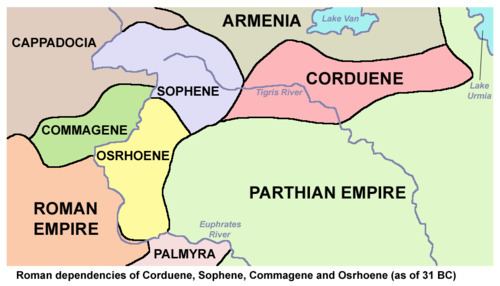 | ||
Feast day of king abgar the osroene
Osroene, also spelled Osrohene and Osrhoene (Ancient Greek: Ὀσροηνή; Syriac: ܡܠܟܘܬܐ ܕܒܝܬ ܐܘܪܗܝ Malkūṯā d-Bēṯ ʿŪrhai) and sometimes known by the name of its capital city, Edessa (modern Şanlıurfa, Turkey), was a historical kingdom located in Upper Mesopotamia, which enjoyed semi-autonomy to complete independence from the years of 132 BC to AD 244, and a Roman province from AD 244–608, from AD 318 within the Diocese of the East.
Contents
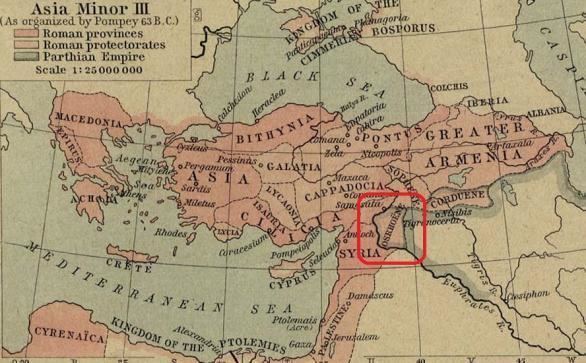
By the 5th century Edessa had become a center of Syriac literature and learning. In 608 the Sāsānid Khosrow II took Osroëne, and in 638 it fell to Muslim conquest of Persia.

Feast day of king abgar the osroene
Kingdom

Osroene, or Edessa, acquired independence from the collapsing Seleucid Empire through a dynasty of the nomadic Nabatean tribe called Orrhoei from 136 BC. The name Osroene derives from Osroes of Orhai, a Nabatean malka who in 120 BC wrested control of this region from the Seleucids in Syria. Most of the kings of Osroene are called Abgar or Manu who settled in urban centers. Under its Nabatean dynasties, Osroëne became increasingly influenced by Syriac culture and was a centre of national reaction against Hellenism.
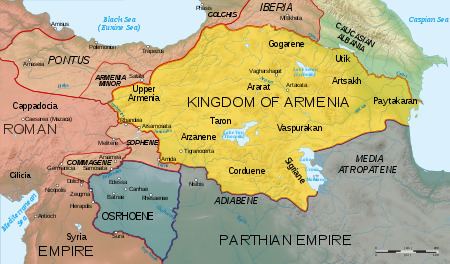
Osroene was one of several kingdoms arising from the dissolution of the Seleucid Empire. The kingdom occupied an area on what is now the border between Syria and Turkey.This kingdom was established by The Nabataeans tribes from Southern Canaan and North Arabia, and lasted nearly four centuries (c. 132 BC to 214 AD), under twenty-eight rulers, who sometimes called themselves "king" on their coinage.
It was in this region that the legend of Abgar of Edessa originated.
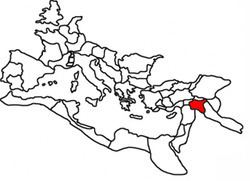
Osroene was absorbed into the Roman Empire in 114 as a semi-autonomous vassal state, after a period under Arsacid (Parthian) rule, incorporated as a simple Roman province in 214. There is an apocryphal legend that Osroene was the first state to have accepted Christianity as state religion, however there is not enough evidence to support this point of view.
Roman province

The independence of the state ended in 244 when it was incorporated in the Roman Empire. It was a frontier province, lying close to the Persian empires with which the Romans were repeatedly at war. It was taken and retaken several times. Being a province on the frontier it had a Roman legion stationed there, Legio III Parthica and its Castrum (homebase) may have been Resaena, though there are some doubts on that fact.
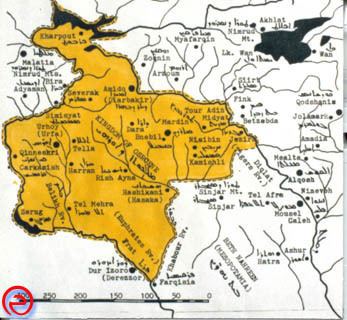
Following Emperor Diocletian's Tetrarchy reforms during his reign 284-305 CE, it was part of the diocese of Oriens, in the praetorian prefecture of the same name. According to the late 4th-century Notitia Dignitatum, it was headed by a governor of the rank of praeses, and was also the seat of the dux Mesopotamiae, who ranked as vir spectabilis and commanded (c. 400) the following army units:
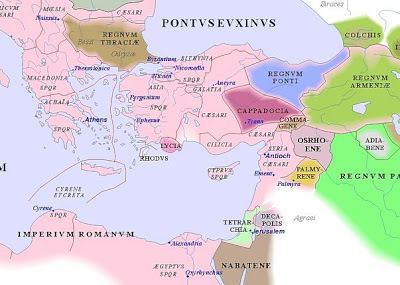
as well as, 'on the minor roll', apparently auxiliaries:
According to Sozomen's Ecclesiastical History, "there were some very learned men who formerly flourished in Osroene, as for instance Bardasanes, who devised a heresy designated by his name, and his son Harmonius. It is related that this latter was deeply versed in Grecian erudition, and was the first to subdue his native tongue to meters and musical laws; these verses he delivered to the choirs" and that Arianism —a more successful heresy— met with opposition there.
Rulers of Osroene
Episcopal sees
Ancient episcopal sees of Osrhoene listed in the Annuario Pontificio as titular sees:
